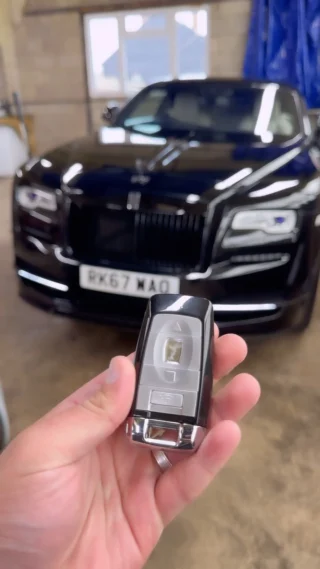Comprehensive Guide to Car Door Lock Repair: Troubleshooting and Solutions
The integrity and performance of a vehicle's door locks are necessary for both the security of the car and the safety of its residents. Car door locks can experience a range of concerns, ranging from minor mechanical glitches to finish failures. This article seeks to provide an informative overview of car door lock repair, describing typical problems, diagnostic treatments, and solutions.
Understanding Car Door Locks
Before delving into repair treatments, it is crucial to understand the elements of a normal car door lock. There are 2 primary kinds of locks: mechanical and electronic.
Elements of a Car Door Lock System
- Lock Cylinder: The part where the key is inserted.
- Latches: Mechanisms that hold the door shut.
- Actuator: Electric motor in electronic locks that helps in locking and opening.
- Linkage: Connects the lock cylinder to the latch.
- Remote Key Fob: In electronic systems, this is used to lock and unlock the doors from a distance.
Typical Issues with Car Door Locks
Car door locks can stop working for a multitude of reasons. Here are some typical problems experienced by vehicle owners:
- Sticking or Frozen Locks: Especially in cold weather condition, locks can become difficult to operate.
- Lock Not Engaging or Disengaging: Both mechanical and electronic locks can face problems where they do not react to the key or remote.
- Key Jams: The key may get stuck in the lock, making it difficult to lock or unlock the door.
- Remote Malfunction: In electronic systems, the key fob might not work due to battery problems or programming issues.
- Physical Damage: Vandalism or accidents can damage the lock system.
Troubleshooting Car Door Lock Issues
When a car door lock is not working properly, it is necessary to identify the issue precisely before continuing with a repair. Below are steps that can assist fix the issue:
Step-by-Step Troubleshooting
Visual Inspection:
- Check the door lock and surrounding parts for visible damage.
- Analyze the key for wear and tear.
Evaluate the Key:
- If the lock is sticking or not engaging, try utilizing an extra key if readily available.
- Make sure the key is clean from dirt and particles.
Inspect the Actuator:
- Listen for any noises when pressing the key fob. A clicking noise might suggest a malfunctioning actuator.
Inspect Door Wiring:
- Check the wiring that links the door lock to the vehicle's electrical system.
- Search for disconnected or frayed wires.
Temperature Influence:
- If the lock is sticking in winter, use lithium grease to assist lube the mechanism.
Repairing Common Door Lock Issues
Once the issue has actually been detected, the repair can begin. Here are some typical repair methods for numerous issues:
Fixing a Sticking or Frozen Lock
- Cleaning: Use a graphite lube or silicone spray to tidy and lubricate the system.
- Heating: If frozen, utilize a hairdryer to warm the area around the locking mechanism carefully, avoiding overheating.
Repairing a Lock Not Engaging/Disengaging
Lock Cylinder Replacement:
- If the lock cylinder is worn, think about replacing it. This frequently involves spying off the door panel to access the lock mechanism.
Actuator Replacement:
- For electronic locks, if the actuator is malfunctioning, it will require replacement. Make just click the following document to disconnect the battery before attempting this repair.
Repairing a Jammed Key
- Extraction Tool: If a key is stuck, utilize a set of needle-nose pliers to carefully pull it out, or a key extractor.
- Lock Lubrication: Apply a small amount of lubricant to reduce the procedure.
Remote Key Fob Malfunction
- Battery Replacement: Most remotes have replaceable batteries. Follow the maker's directions to change the battery.
- Reprogramming: Sometimes, the remote requirements to be reprogrammed. Refer to the vehicle's handbook for steps to reprogram the key fob.
Physical Damage Repairs
- Door Lock Assembly Replacement: If the lock is physically harmed, total replacement of the lock assembly may be required.
- Expert Help: If uncertain about DIY repairs, seek help from a qualified mechanic.
Upkeep Tips for Car Door Locks
To extend the life of car door locks, routine maintenance is important. The following practices can help preserve optimum performance:
- Regular Lubrication: Apply suitable lubricant to the locks every few months.
- Keep Keys Clean: Regularly clean the car keys to avoid dirt accumulation.
- Prevent Excessive Force: Do not use excessive force when locking or opening; this can cause damage gradually.
- Look for Signs of Wear: Be attentive to any modifications in the lock's efficiency and address issues without delay.
Frequently Asked Questions about Car Door Lock Repair
Q: How can I tell if my door lock is broken?A: Common
indications consist of the lock not engaging or disengaging, a jammed key, sounds from the door when using the key fob, or visible damage to the lock assembly.
Q: Can I repair a car door lock myself?A: Yes, numerous basic problems can be addressed by following the repairing steps in this article, however complex issues may require professional help. Q: What type of lubricant need to I use
for my locks?A: It is best to utilize graphite powder or silicone-based lubes considering that oil can draw in dirt and grime. Q: How much does it generally cost to change a car door lock?A: The cost can vary extensively
based upon the vehicle's make and design, however common replacement costs
can range from ₤ 100 to ₤ 300, including labor. Car door lock repair can appear challenging, but comprehending the components and typical issues can make the procedure much more workable. Whether tackling small repairs yourself or seeking professional help for more substantial issues, keeping the door locks functioning correctly is essential for vehicle security and safety. Regular maintenance and prompt attention to issues can significantly extend the life of your car's locking system.

